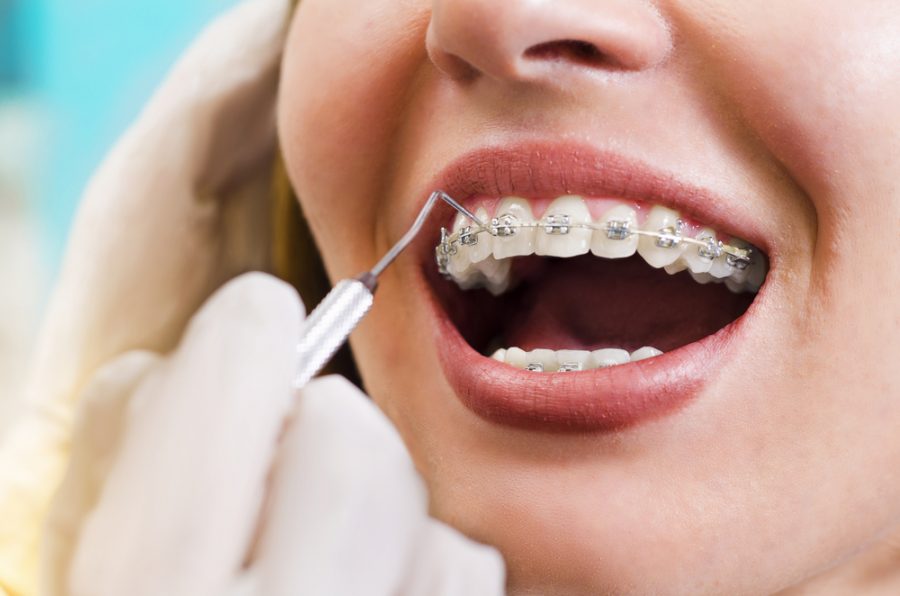
Having Questions On How Braces Work? Read To Know More
For people with misaligned or crooked teeth, braces can be a blessing. Both these problems can cause physical and emotional pain other than lowering your confidence. Braces are so effective that both teenagers, as well as adults, take to them for correcting their jaw structure.
If you have been considering braces for yourself or your family, it is natural to have some concerns in your mind. This article can be your comprehensive guide to know more about braces and how they work.
What are Dental Braces?
Dental braces are an orthodontic treatment that can straighten or align your teeth. They are also used to adjust your bite if you have an underbite or an overbite.
In general, braces are useful for most people, but a lot also depends on their goals and the way they follow their orthodontist’s instructions.
How do Braces Work?
Braces align your teeth by putting continuous pressure on them for an extended period. Due to this pressure, the teeth realign and adjust their position. This process is called bone remodeling and is not as intimidating as it may sound.
At the onset, you may wonder if the braces are moving the bones in your mouth that connect to the jaw. In reality, braces work on the membrane under your gums. This membrane contains the roots through which the teeth connect to the jaw.
This membrane, under the pressure of the braces, realigns the teeth to give your teeth a cleaner shape. As you get crowded teeth braces, one part will work on stretching these tissues to the desired position, while the other part will compress to allow the movement.
Apart from remodeling the bone, braces also strengthen the teeth. It happens due to the formation of new cells from the pressure that is exerted on the teeth. These new cells enhance the bone density of the teeth, and by the end of the process, you get a stronger jaw and teeth.
What are Metal Braces?
These are the traditional braces that have been in use for the last couple of years. They typically consist of several components like metal brackets, archwires, and bands. Let’s take a look at them in detail.
Brackets
Brackets come in different materials like ceramic, plastic, and stainless steel. These are the small squares that are stuck on individual teeth. Your doctor will use an adhesive to stick them to your clean and dry teeth.
They are like the handles that hold the archwire in place. The wire comes over these braces and sets the pressure for adjusting your teeth.
Ceramic or plastic brackets are an innovation that camouflage with your teeth and make your braces less noticeable. You can check with your dentist if there is a possibility of putting these brackets to the back of your teeth.
Orthodontist Bands
Some people require anchors for holding brackets. They can be ceramic or colorless for a more aesthetic appeal. However, you can opt for stainless steel bands if the cost is a constraint for you, as ceramic can be pretty expensive.
Ligatures
These bands are the elastic or the rings that are very typical of metallic braces. When placed around the braces, they connect the brackets and the archwire. It is these bands that put the pressure on your teeth.
They are perhaps the most vital parts of the braces. Your dentists will either twist them tighter or change them during your subsequent appointments. They come in a lot of fun colors, and your dentist may give you an option to change them during your visits.
Spacers
These are the elastic or metal rings that go around the molars. The purpose of using spacers is to create more space at the back of the mouth. You may want to note that not everybody needs spacers.
Even if you do need them, your dentist will put them for a week or two at a time.
Archwire
If you have ever noticed anyone with braces, you would have observed a wire that runs over the brackets. It is called the archwire and is made of stainless steel, copper titanium, or nickel-titanium. Its purpose is to pull your teeth to create the desired space and get the right alignment.
What are Clear Braces?
Clear or invisible braces are the answer to those people who need to correct their teeth but do not like the look of metal braces. They are the latest revolution in the field of orthodontics. As you wear them, no one will be able to make out that you are wearing braces at all.
What About Mini Braces?
As the name suggests, there are smaller braces that do not cover every individual tooth. However, they do not work on all people. You may want to check with your dentist if you are the right candidate for them.
Does it Hurt to Wear Braces?
The simple answer is no. You may feel a little discomfort during your initial appointments. Also, the first few ones can be pretty long when the dentist works to put your braces on.
You may need some time to get used to the pressure, but there will be no pain as such. However, some people need a tooth extraction to make space for the movement of the teeth. In such cases, there can be pain and discomfort after the extraction.
When is the Right Time to Get Braces?
There is no right age for braces, as they can work at any age. However, it is much easier when you are a child or an adolescent. The tissues are still developing, and the jawline is more flexible.
Not only will the treatment be more responsive, but it will also take lesser time. It is the reason why dentists suggest taking children for bi-annual dentist visits. They can evaluate the progress of their teeth and recommend braces at the right time.
Conclusion
The appearance of your teeth can make a remarkable difference to your confidence. The good news is that there several options like diy teeth whitening and dental braces to get them in proper shape and color. With the information shared above, you can rest your worries about dental braces and give them a go.


